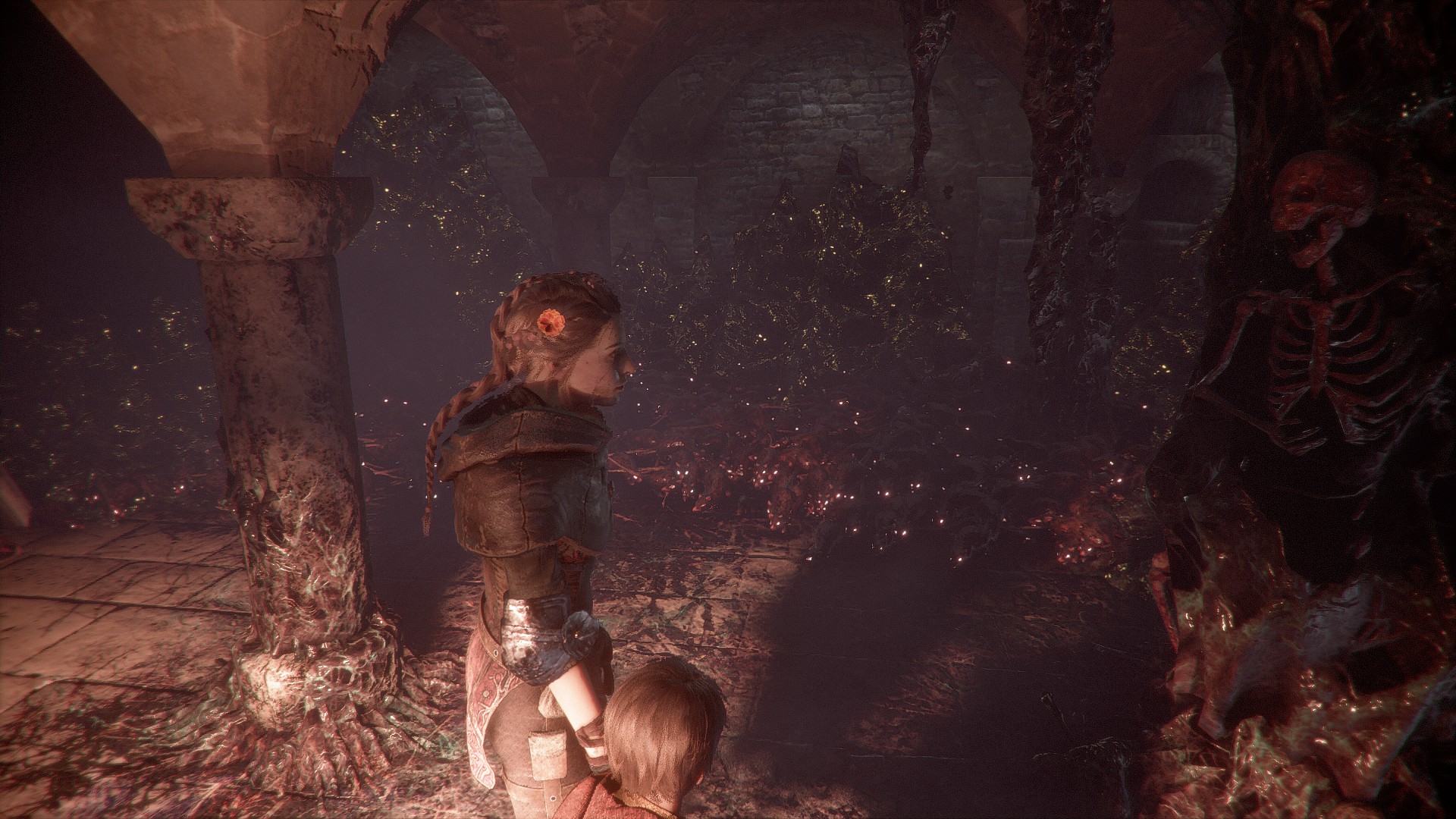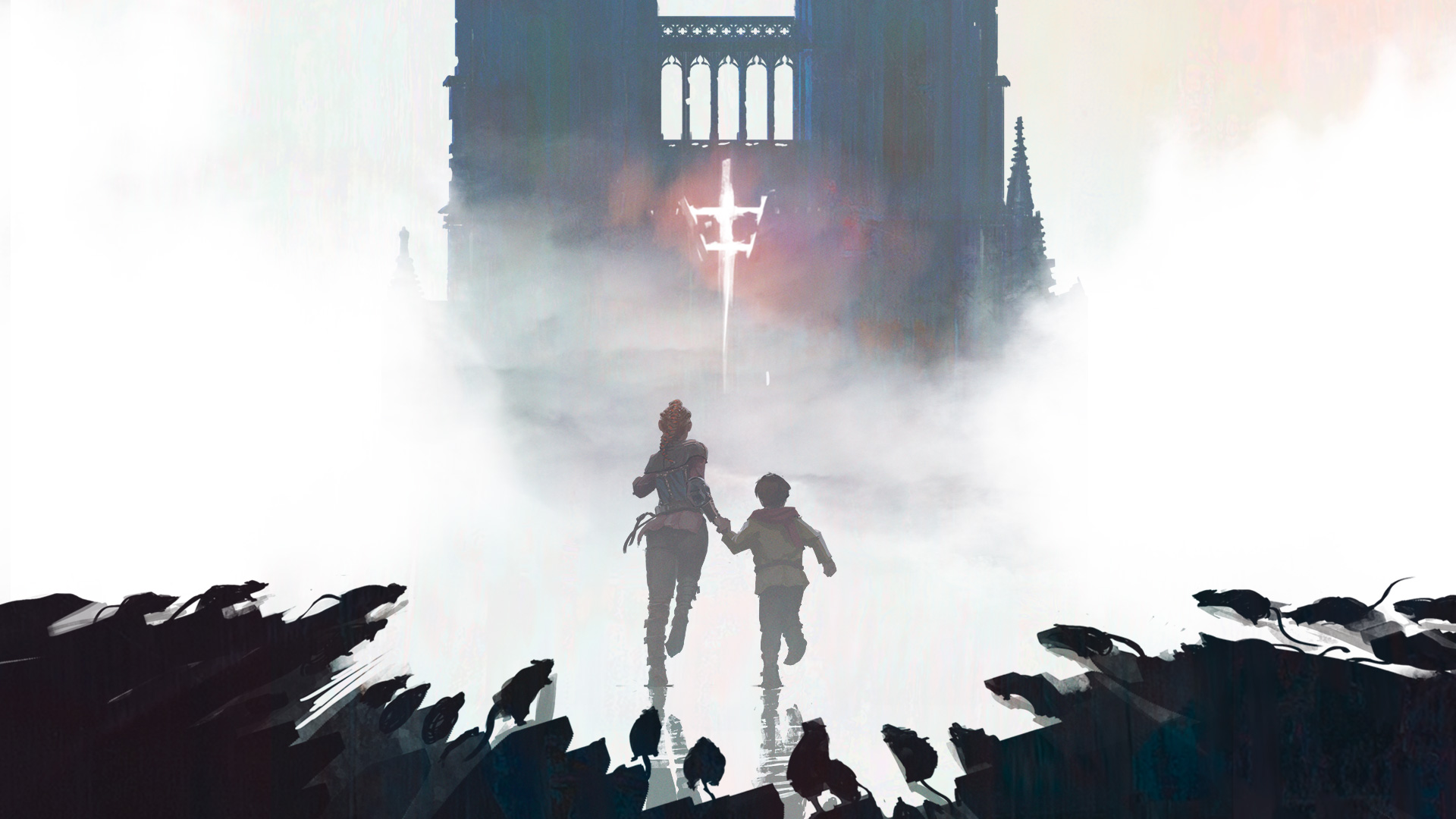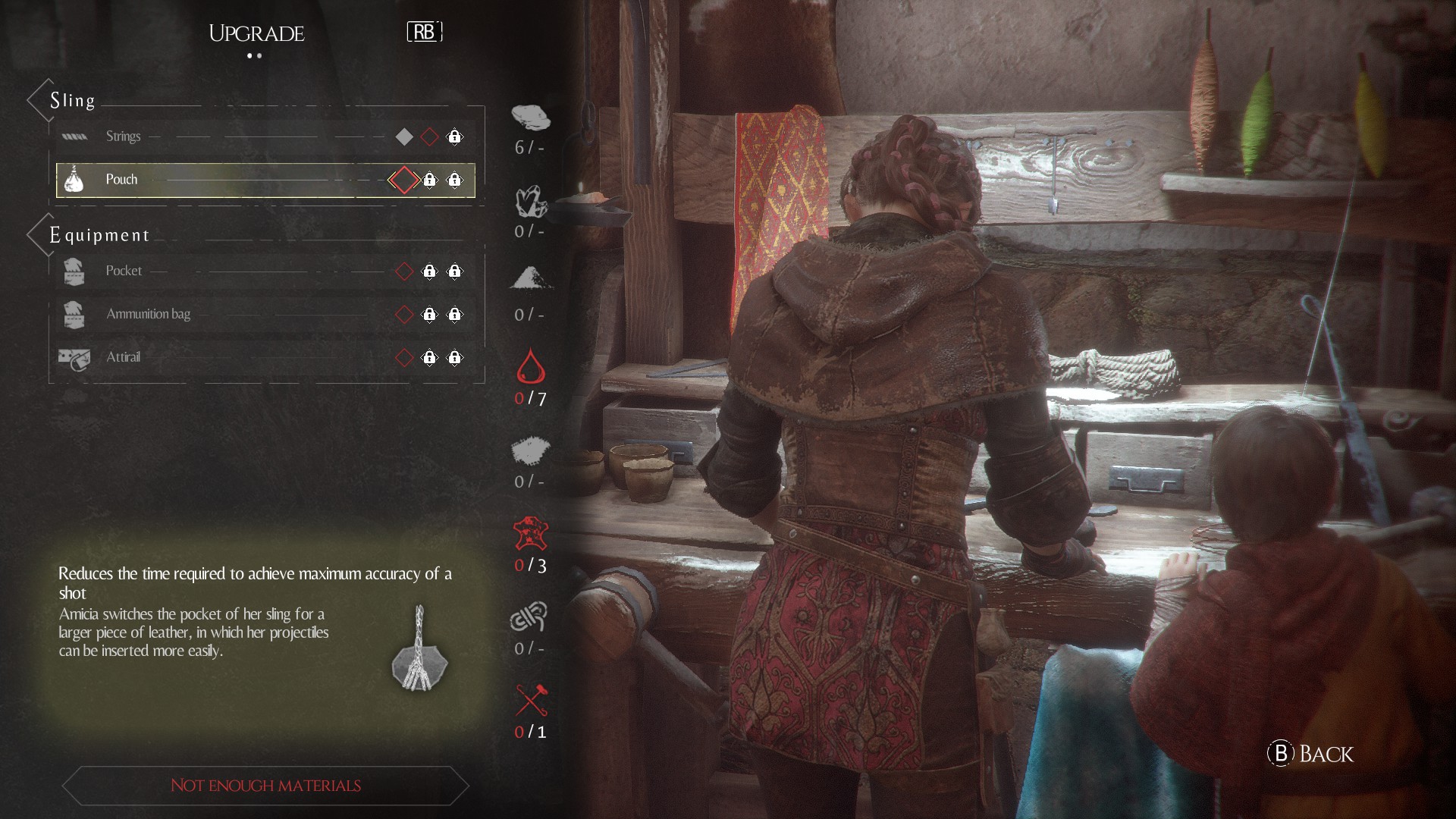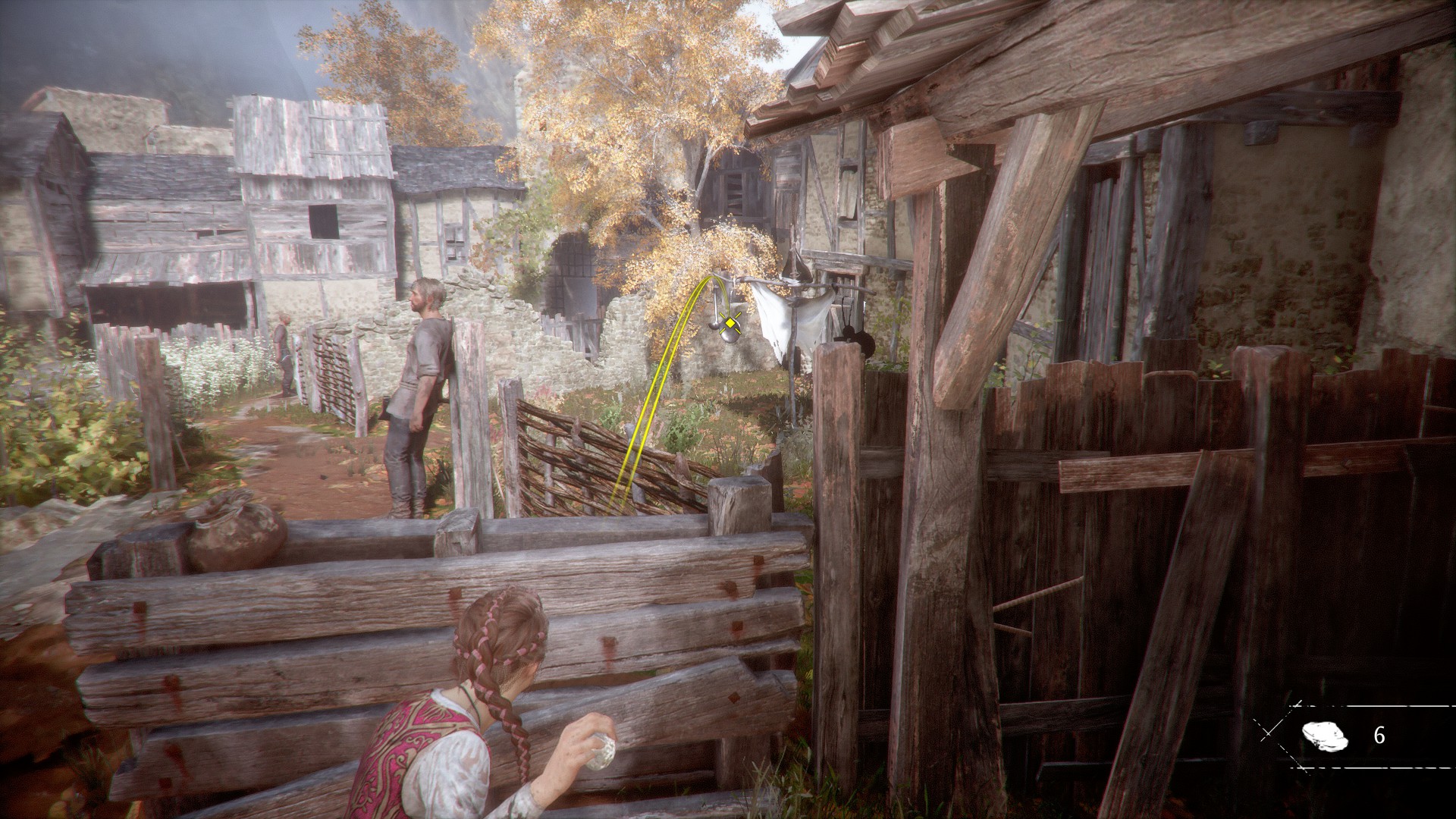When I spoke to the developers of A Plague Tale: Innocence at last year’s E3 in Los Angeles, they were hesitant to call it a horror game.
To be fair, they aren’t exactly wrong. For a lot of its initial running time, A Plague Tale is more like a historical drama. Set during the Hundred Years’ War in 14th-century France, you play as Amicia de Rune, the daughter of a minor nobleman whose family suddenly ends up on the Inquisition’s hit list.
Shortly thereafter, Amicia and her little brother Hugo are forced to flee across the countryside toward safety, at a time when hostile priests, invading Englishmen, maddened villagers, and the Black Death are all competing to get the chance to kill them.
It’s a slow burn of a game with real human stakes, and it takes the time to build up its world and its characters. There’s real thought behind the portrayal of Amicia and Hugo’s family, the life they’ve built, and the time they’re in. There’s a touch of Hollywood cleanliness to the proceedings, of course, but the opening hours of A Plague Tale feel like a careful period piece, even once the action begins.

That being said, our hands-on preview proved one thing: this is also a game about being chased at every turn by demon rats.
The rats first show up right at the title screen, but take their time in making their onscreen debut. Once they do, however, they’re almost inescapable, boiling up from every unattended crack and shadow; they act like little black land piranha with eerily glowing eyes. Anything that gets caught by them is reduced to a wet red skeleton in seconds.
Every time the rats appear, A Plague Tale jumps into an entirely different genre-pool. The Black Death is ravaging the area, the Inquisition is breathing down your neck, the English are about 10 minutes away from yet another full-scale invasion, and somehow, thanks to the rats, things are about to get even worse.
Early on, the rats are an obstacle. They’re easily distracted by simple meals, so you can get a bunch of them off your case at once by throwing them meat, and they won’t get anywhere near bright light. Getting through an infested area is mostly about finding ways to illuminate your path with lit torches, burning sticks, or unlit braziers.
Later on, the rats also become a weapon, which was a big part of the level that the developers, Asobo Studio, were showing off back at E3. If there’s a hostile soldier in your way and you can figure out a way to put out his torch, then you’ve just rung the rats’ dinner bell and solved two problems at once. It’s clever, sure, but the game’s also not at all shy about letting you know that you just did something terrible to a guy.
I’ve played through the first couple of hours of A Plague Tale, and the easiest point of comparison is probably The Last of Us. Like that game, this a linear story about the relationship between its two leads as they navigate an exquisitely terrible situation, all with a special focus placed on the consequences and aftereffects of violence.
It also emphasizes stealth as a way to survive against overwhelming odds, although here, it’s usually your first and best option.
A Plague Tale is much more of an adventure game, however. The go-to obstacles in your way require a bit of creative thinking and some exploration of your environment before you can proceed. There is some combat, although it’s clunky by design.
Amicia begins the game equipped with a sling, which can break distant objects and stun people if you get a clean shot on their heads, and it turns into an okay weapon after a few crafted upgrades. The sling takes time to spin up, however, and is nearly useless against somebody who’s already close enough to take a swing at you.
Most of the time, if there’s going to be a fight at all, you’ll win it with a surprise attack or a clever environmental kill. You eventually learn how to create alchemical ammunition for your sling, which you can use to set distant targets on fire. That, in turn, widens your options for both basic combat and problem-solving.
I do think that this game’s likely to turn some people off right from the jump, though. It’s a full-length escort mission where you’re stuck babysitting for a relatively realistically-depicted young boy. If you get too far away from Hugo, he’ll pitch a fit that alerts nearby enemies, so you can’t just stick him in a bucket and come back for him later Resident Evil 4-style.
A lot of the time, you can hold his hand and he’ll obediently follow you wherever you go, but I can’t say that it wasn’t occasionally obnoxious, especially when he constantly argues with Amicia about what their next move should be.
I get the feeling that the design intent here is to try to invoke the unique blend of protectiveness and sheer teeth-grinding rage that only an annoying little brother can provide, and in that, it’s reasonably successful. In practice, however, story-appropriate player aggravation is still player aggravation.
A Plague Tale was developed by the French studio Asobo, which has made its bones for the last 15 years or so contributing to other companies’ projects, or making licensed games like Monopoly Plus and Disneyland Adventures. A Plague Tale marks the company’s first foray into original IP since the obscure 2005 PC/Xbox shooter Nemesis Strike.
With that in mind, I’m genuinely impressed that Asobo chose to make something like A Plague Tale. It doesn’t have that mass-market feel where it exists to chase a market trend, but instead, it feels like a passion project, set in a period that few other games ever explore, with some risky creative decisions involved.
I’d like to see this succeed, if only because it’s a novel experience. We’ll just have to wait until later this year to see if its uniqueness can achieve that.









Published: Feb 28, 2019 02:26 am